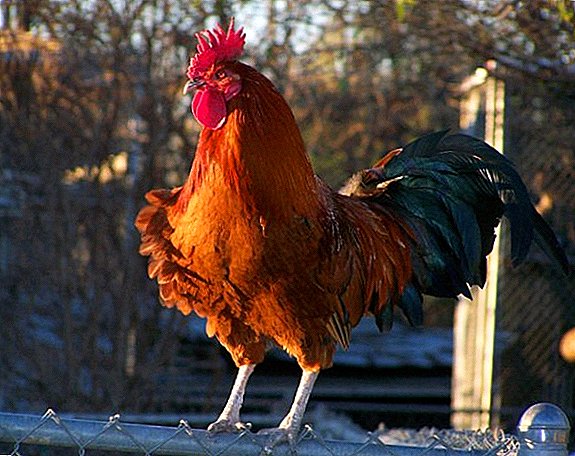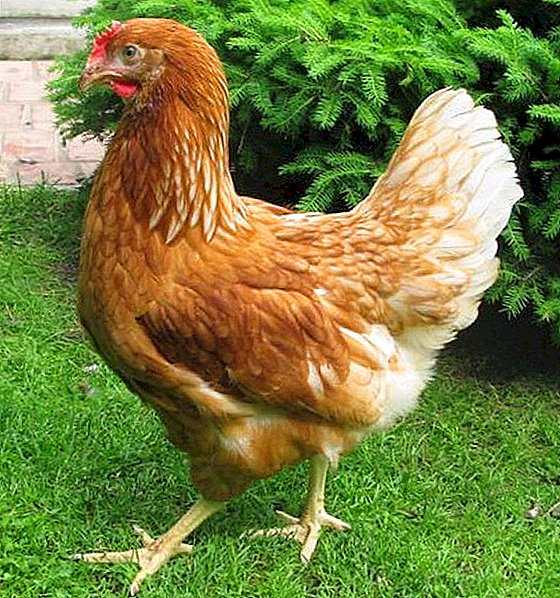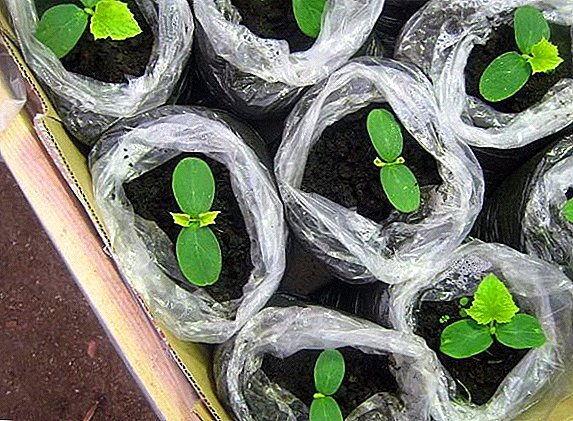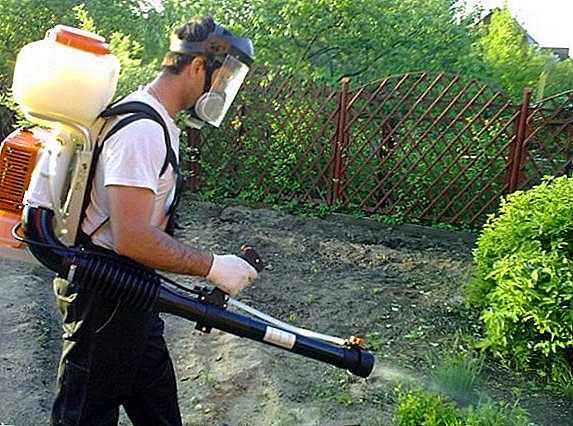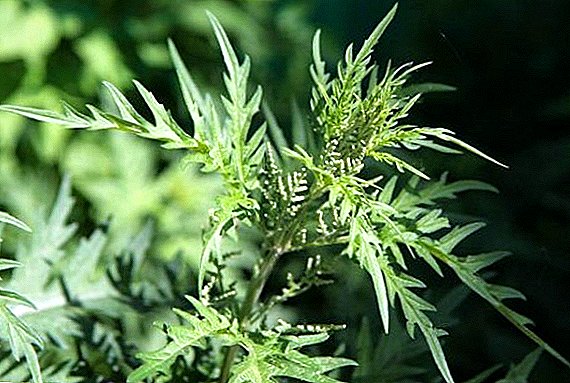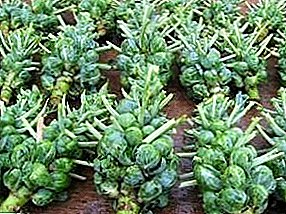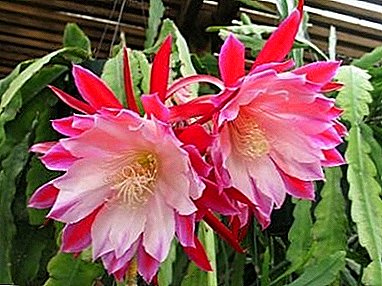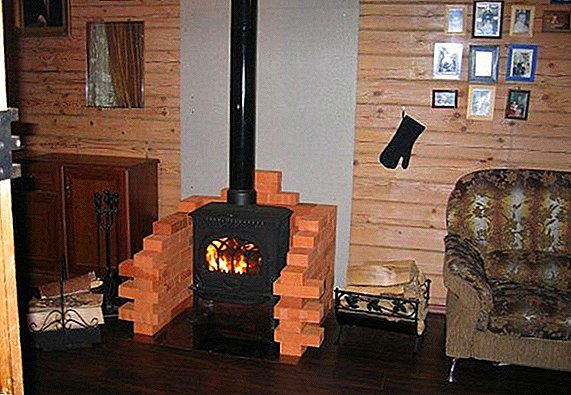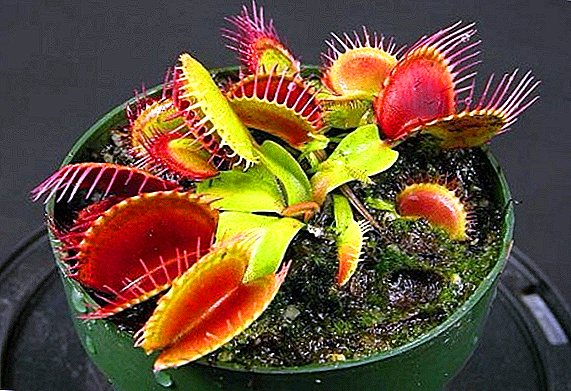 In nature, there are predatory plants. Venus flytrap or dionea (Dionaea muscipula) - one of them. This herbaceous perennial of the dewed family has a rosette of 4-7 bright leaves with prongs along the edges and digestive glands. When touched, each leaf may close like oyster shells. An insect or other creature that was attracted by a leaf, touching the hairs in its center, almost instantly becomes trapped. Both halves will close and will be closed until the victim is digested. This process can last from five to 10 days. If the sheet of Dionei misses, or something inedible falls into it, it will open again in half an hour. Each leaf trap during its life is able to process up to seven insects.
In nature, there are predatory plants. Venus flytrap or dionea (Dionaea muscipula) - one of them. This herbaceous perennial of the dewed family has a rosette of 4-7 bright leaves with prongs along the edges and digestive glands. When touched, each leaf may close like oyster shells. An insect or other creature that was attracted by a leaf, touching the hairs in its center, almost instantly becomes trapped. Both halves will close and will be closed until the victim is digested. This process can last from five to 10 days. If the sheet of Dionei misses, or something inedible falls into it, it will open again in half an hour. Each leaf trap during its life is able to process up to seven insects.
A flower behaves in this way, since its habitat in the wild is in barren soils, and insects become for it an additional source of nitrogen, phosphorus and other substances it needs.
The Venus flytrap lives only in the USA, on wetlands in North and South Carolina. However, with success and with some hassle it can easily settle on the windowsill of your apartment. How to grow a Venus flytrap and about the peculiarities of caring for it at home, read in our article.
Did you know? The flycatcher takes about 30 seconds to recognize the victim.
Choosing a place for a flycatcher
Immediately make a reservation that the process of growing this plant will not be easy, since it will be necessary to ensure natural conditions for it. So, the flycatcher needs to be watered with rainwater, watch that the ground under the plant is constantly wet, take care measures, and also periodically feed them.  But first things first. And we begin with the recommendations on the choice of habitat for the flycatcher.
But first things first. And we begin with the recommendations on the choice of habitat for the flycatcher.
Temperature
Dionea is a heat-loving plant. At the same time, all year-round being only at room temperature, she will not be able to live long. Temperature regime must be maintained artificially.
The optimum temperature for its growth in the fall and spring will be + 22-28 ºС. The highest temperature limit for the plant in summer will be +35 ºС. In winter, for 3-4 months, the flycatcher is at rest, at this time it is necessary to ensure the temperature from 0 to +10 ºС.
Since the plant reacts very sensitively to changes in temperature, most often it is planted in glass greenhouses, florariums. It is also easier to maintain the optimum humidity for the plant - 70%.
Did you know? At home, Dionea is under threat of extinction, since its collection for illegal trade is widespread there. Venus flytrap is listed in the Red Book of the International Union for Conservation of Nature.
Lighting
 Exotic carnivorous loves well-lit places, but not in direct sunlight. It is better if the light to it will come scattered. For its cultivation suitable windows, balconies, loggias, facing west or east. This may be the south side, but in this case it will be necessary to take care of shelter from direct rays. It is important that the light source is constantly located on one side. Do not rotate the pot with the flycatcher - she does not like it. With insufficient natural light, it is possible to use artificial lighting. For a well-being, a flytrap requires access to light at least four hours a day. Artificial lighting during the growing season will need to be used for 12-14 hours per day.
Exotic carnivorous loves well-lit places, but not in direct sunlight. It is better if the light to it will come scattered. For its cultivation suitable windows, balconies, loggias, facing west or east. This may be the south side, but in this case it will be necessary to take care of shelter from direct rays. It is important that the light source is constantly located on one side. Do not rotate the pot with the flycatcher - she does not like it. With insufficient natural light, it is possible to use artificial lighting. For a well-being, a flytrap requires access to light at least four hours a day. Artificial lighting during the growing season will need to be used for 12-14 hours per day.
Important! If suddenly the trap leaves of your flycatcher changed color to dimmer, stretched out and became thinner, then, most likely, the plant is deprived of sunlight.
Choosing dishes for planting
The best place for landing Venus flytrap will be an aquarium or other glass container. They will protect the plant from drafts and at the same time give access to fresh air. The capacity in which the planting of the flower is planned should be at least 10-12 cm deep and have drainage holes. It is desirable to have a pallet in which to maintain the necessary moisture you need to put the moss.
Soil for Venus
 In order for the Venus flytrap to please you at home as long as possible, you must follow certain rules on lighting, watering and selection of soil for planting.
In order for the Venus flytrap to please you at home as long as possible, you must follow certain rules on lighting, watering and selection of soil for planting.
We have already written about the fact that in nature a predator plant grows on poor soils. Therefore, in the apartment it will also be able to live in similar soils, however, if there is good drainage. The best option would be a mixture of quartz sand and peat (1: 1) or a mixture of perlite and peat (1: 1). Perlite seven days before planting must be soaked in distilled water, changing it twice during this time.
You can also use the substrate in this composition: peat, perlite and sand (4: 2: 1). It is recommended to change the soil every two to three years.
Important! When choosing peat, it is necessary to pay attention that the natural acidity of the soil in which the flycatchers grow is 3.5-4.5.
Planting, reproduction and transplantation of Venus
 Dionea, acquired in the store, it is better to immediately transplant in the prepared in advance soil. To do this, the plant must be carefully removed from the pot along with a clod of earth. Next, the roots of this land must be cleaned, you can rinse them in distilled water. After that, the flycatcher is planted in a container prepared for it with the substrate, having previously made a small hole. The stalk of Venus flytrap needs to be sprinkled with earth, you do not need to tamp the soil when transplanting.
Dionea, acquired in the store, it is better to immediately transplant in the prepared in advance soil. To do this, the plant must be carefully removed from the pot along with a clod of earth. Next, the roots of this land must be cleaned, you can rinse them in distilled water. After that, the flycatcher is planted in a container prepared for it with the substrate, having previously made a small hole. The stalk of Venus flytrap needs to be sprinkled with earth, you do not need to tamp the soil when transplanting.
In the future, carnivorous replanting is better in the spring, but transplantation is also allowed in the autumn. The plant gets used to the new soil for five weeks.
Dionea reproduces in three ways: seeds, bulb division and cuttings. We describe the features of each of them in more detail.
The method of dividing the bush
The older the plant becomes, the more it will have affiliated bulbs. Onions can be carefully, without breaking the roots, separated from the mother flower and planted in a new container, which is desirable to be placed in the greenhouse. Using this method is better not more than once every three years. 
With the help of cuttings
For growing taken stalk without a trap. It should be planted at an inclination into a container with wet peat with the bottom part of white color. Put the container in the greenhouse, where to maintain one hundred percent humidity and lighting. Sprouts should appear within a month. Plants that can be used for planting will grow in two to three months.
Seed method
Seed method is more complicated than vegetative. To grow dyon from seed, you need to buy seed in a specialty store, prepare a substrate (70% sphagnum moss and 30% sand) and a greenhouse. Greenhouse is made from any container of small size. It is covered with a lid or film.
 Seeds before planting in the ground should be treated with a solution of "Topaz" (add two or three drops to distilled water). Then they must be placed in the substrate, not covered with earth. Moisten the soil with a spray bottle. Capacity to put in the sun or under artificial lighting. The optimum temperature for seed germination is + 24-29 ºС. The term for which should appear seedlings, is 15-40 days. During this time you need to maintain the required level of humidity.
Seeds before planting in the ground should be treated with a solution of "Topaz" (add two or three drops to distilled water). Then they must be placed in the substrate, not covered with earth. Moisten the soil with a spray bottle. Capacity to put in the sun or under artificial lighting. The optimum temperature for seed germination is + 24-29 ºС. The term for which should appear seedlings, is 15-40 days. During this time you need to maintain the required level of humidity.
After the appearance of the first two leaves, the lid will need to be periodically removed in order to harden the plants. A little later, after a month or two, the seedlings can dive into the pots.
An even more labor-intensive way will be the breeding of a flycatcher with the help of independently obtained seeds. Flowering should be expected from dionei two years of age and older. It blooms with beautiful white flowers. In order to get seed, flowers will need to be pollinated manually. A month after flowering the flycatcher will give fruit in the form of a box. The seeds extracted from the dry box should be planted immediately (within two days) in the ground, because over time they lose the ability to germinate.
Plant Care
 Adult Dionea, or Venus flytrap, requires special care. Firstly, the soil in the pot should be constantly wet, its drying is unacceptable. However, in the winter, overmoistening can lead to rotting of the roots, so watering should be moderate.
Adult Dionea, or Venus flytrap, requires special care. Firstly, the soil in the pot should be constantly wet, its drying is unacceptable. However, in the winter, overmoistening can lead to rotting of the roots, so watering should be moderate.
Watering Venus Flytrap
Watering should be carried out using distilled or rainwater. Tap water, even when separated, is prohibited.
The flycatcher is watered under the root or water is poured into the pan. It is important to prevent stagnant fluid. The flower also requires regular spraying.
Fertilizer and dressing
With the daily care of Venus flytrap, it is important to know four facts:
- The plant does not require fertilizers.
- The Venus flytrap does not feed on dead insects and flies.
- The flower does not like extra touch to the leaves-traps.
- Dionea does not tolerate dry air and heat.
Did you know? Juice, which is produced by the leaves of the flycatcher, is able to fully digest the victim, leaving only its skeleton. By chemical composition, it is similar to human gastric juice.During the procedure of feeding the Venus flytrap it is important to remember that for feeding you should not use large insects, but those that fit in the whole trap. If any part of the feed remains outside, it may cause the leaf to rot.
 Do not feed the plant too often and too much. Usually two or three insects are enough for the whole summer period. You can stick to the interval of 14 days, but not more often. Feed need only two traps.
Do not feed the plant too often and too much. Usually two or three insects are enough for the whole summer period. You can stick to the interval of 14 days, but not more often. Feed need only two traps.
It is necessary to stop feeding at the end of September, since from now on the flycatcher will be preparing to go to a state of rest when there will be no need for food. Also, it is not necessary to feed the just transplanted plant, which is not fully mastered in the new soil.
Pests and diseases
In general, the Venus flytrap is resistant to diseases and pests. However, as they say, the old woman is proruha. So, with constant strong overmoistening of the soil, fungal diseases can develop, such as black black fungus and gray rot. Also, the plant can infect mealybugs, spider mites, aphids.
For the prevention of diseases, insecticidal aerosols are used; fungicides are used in the treatment.
Observing all the above rules, you will be able to grow a beautiful exotic plant, which can also replace your pet, whose life is interesting and informative to observe.



